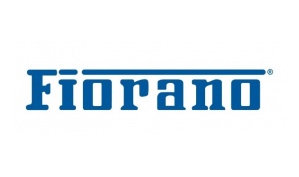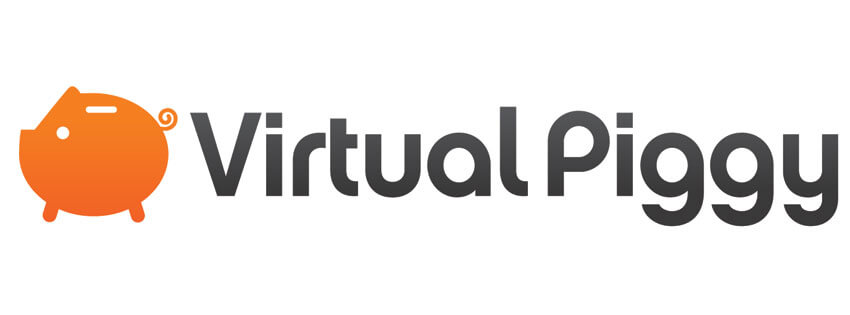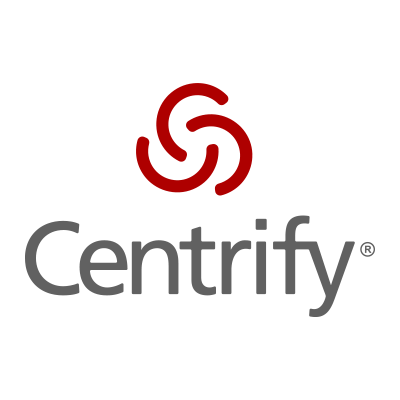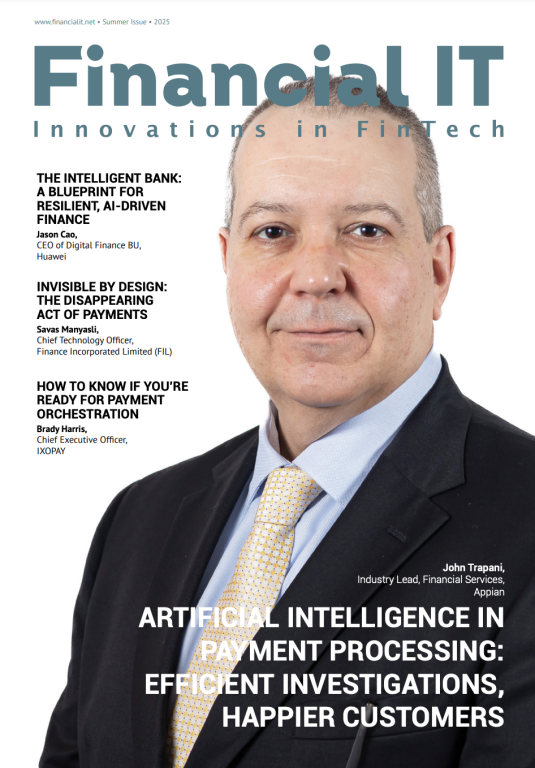Published

- Product Reviews
- 15.02.2017 08:49 am
What does the product do?
Fiorano ESB is a microservices-based middleware solution which helps in integrating heterogeneous applications through its codeless configuration based tools. In simple words, it enables different software to talk to each other reliably and effortlessly.
It allows you to tie your existing islands of IT systems together for real-time data sharing, cross-system business process management, faster transaction automation and complete visibility across the enterprise. Fiorano provides a secure, scalable platform for a "real-time information network" which forms the first step towards going digital.
Although the integration solution is vertical agnostic, Fiorano has been very popular among banks for providing a core banking integration solution. Banks around the world have deployed Fiorano to integrate their core banking system (T24, Finacle, Flexcube, Bancs, and more) with channel applications like mobile banking, internet banking, ATMs, Payment gateways, Swift integration and more.

Who are the customers?
All the institutions who have embarked on a digital transformation journey require the product. In layman’s language, any institution that requires integration and real-time information sharing between multiple systems/applications need the product.
Financial organizations who require a fast, reliable and scalable messaging platform to perform straight-through processing can leverage Fiorano’s technology to support their business.
Banking institutions have a growing demand for a standard-based middleware that helps them to become more agile in onboarding new applications to their existing IT landscape.
Fiorano ESB is trusted by banks worldwide, especially for core banking integration with satellite applications.
What are the main features of the product?
Fiorano provides a microservices oriented, codeless platform for integrating applications with each other. The Fiorano ESB implements a brokered, peer-to-peer (often referred to as super peer) system architecture, which combines the management benefits of centralized hub-and-spoke systems with the performance benefits of fully distributed peer-to-peer systems, while avoiding the particular disadvantages of both of these individual approaches.
Unlike other solutions, in case of Fiorano users visually assemble instantly running solutions by drawing application and service nodes on a canvas through drag-and-drop of active service components. The lines between nodes comprise event flows via active message pipelines, collectively representing a user-defined event driven architecture. The visual model is the ready-to-run, fully implemented application, with no additional programming required. In case of other solutions, the visual model requires additional programming once again adding to the complexity and cost of implementation and service enablement.
More feature of the product are listed below:
Distributed Services Architecture
- Message-Driven Microservice Model
- Distributed, Dynamic Deployment and Management
- Event-Process Orchestration
- Lifecycle Management and Versioning
- Support for multiple protocols and transports
Enterprise-Class, Peer-to-Peer Communications Backbone
- Unbounded Performance and Scalability
- Service-Level Failover and 24x7x Forever Availability
- Guaranteed message delivery
- REST and Web Services Support
- Comprehensive Security
ESB Generic Services, Tools and Adapters
- Distributed Intelligent Routing
- Monitoring, Logging and Auditing
- Multi-Language Support
- XML Transformations
- Adapters and Pre-built Microservices
What is special about Fiorano ESB?
Fiorano’s primary advantage as compared to large stacks vendors has been “Half the programmers – Half the time”, reflecting the lower learning curve and the cohesiveness and uniqueness of the product architecture. Large stack solutions like Oracle or IBM can be expected to have not only higher licensing costs but importantly, often, require extended use of consulting services to deal with the complexity of the stack which in itself often involves a combination of products developed in isolation of each other. Whereas with Fiorano an average resource can come up to speed in a few weeks; programmer productivity for larger stacks can mean several months or may require expensive integration specialists.
With Fiorano projects have gone live in a few weeks’ time, saving tremendous amounts of resources, whereas the competition quoted 4-6 months of time for delivery.
Other background features are:
- Integration, Choreography and Service Creation Environment
- Powerful Service-Deployment and Runtime Control
- Best-in-Class Performance, Scalability and Reliability via a distributed, Peer-to-Peer architecture
- Comprehensive Security, Governance, Lifecycle Management and Versioning
- Standards-based Heterogeneous SOA
Pricing model:
Fiorano has 2 licensing options: Perpetual and Subscription based.
The Fiorano eStudio provides a graphical interface to compose, deploy and monitor event processes. Fiorano microservices palette is a wide range of pre-built components, each performing a simple business task. There is no coding involved and the visual drag and drop method for creating integration flows makes it very easy for citizen integrators to start connecting different applications.
Fiorano ESB can be downloaded for a 30-day trial from www.fiorano.com. Additionally, there is an open source version launched last year.
What are the reporting capabilities?
The Fiorano Dashboard provides a web-based monitoring tool for the Fiorano ESB Network. It additionally provides support for launching, stopping and restarting an application using a web interface, while also enabling administrators to monitor a wide range of system parameters across the network. Furthermore, it allows administrators to add users/groups and setup Access Control Lists in the Fiorano ESB.
Moreover, Fiorano can easily integrate with any 3rd party reporting tools to enhance and customize your reports.
Rival products are the following:
- IBM Websphere ESB
- Oracle Fusion Middleware/ Oracle Service Bus
- TIBCO
- Mulesoft
- Miscrosoft Biztalk
- Informatica
- RedHat JBoss ESB
Other Product Reviews

Christian Voigt
Senior regulatory advisor at Fidessa
Implementing pan-European financial regulation is no easy feat. Finding agreement across 28 member states and translation into vastly differently legal systems is a true challenge. see more
- 09:00 am

Larry Rosenberger, former CEO of Fair Isaac Corporation (FICO) and current research fellow, has joined Austin-based Data as a Service (DaaS) provider XOR Data Exchange as an investor and board observer. Rosenberger’s experience and expertise in implementing data and analytical models for the financial services industry is expected to help the FinTech startup continue rapid growth, development and adoption of fraud risk models to protect consumers and businesses from identity theft and data misuse.
The addition comes as part of XOR’s latest funding round, a $2 million extension of its Series A investment, which closed at the start of February. In a press statement, XOR Founder and CEO Mike Cook stated the funding will be used to expand XOR’s fraud and credit risk models nationally. While the majority of the funding round was raised by existing Series A investors, new funds were contributed by Rosenberger and Chicago-based Corazon Capital.
“Larry’s investment in XOR, both in funding and in expertise, reflect on the potential of our technologies to revolutionize the financial services industry,” stated Cook. “His leadership at FICO changed the way banks and mortgage providers evaluate credit risk; and now his leadership at XOR will help do the same for fraud. I couldn’t be more excited to work with him.”
Rosenberger is well known across the FinTech and financial services industries for his leadership of FICO between 1991 and 1999, during which time FICO credit scores were made available to all three major U.S. credit reporting agencies and adopted as standards by Fannie Mae and Freddie Mac for mortgage lending evaluation. Those scores remain the gold standard in credit risk used by banks, lenders and service providers nationally and abroad. Since his tenure as CEO, Rosenberger led FICO’s research and development efforts for another eight-year stint before taking on his current role as research fellow.
On his strategic role with XOR, Rosenberger commented, “Mike and his team have created technologies that truly have the potential to reshape the fraud landscape for financial institutions and consumers. My career continues to focus on creating new ways to use data and domain expertise to improve decisions for both people and their providers. I'm excited to work with XOR to continue that innovation focus.”
In his new role as board observer, Rosenberger will lend guidance and expertise in the continued development of data-driven fraud and credit risk mitigation platforms. The startup’s technologies have introduced revolutionary approaches to fraud mitigation made possible by its unique data sharing model, which is designed to protect the privacy and security of consumers and businesses. As a result, XOR is currently under consideration for “Innovator of the Year” at the first annual LendIt Industry Awards. The startup will compete for top honors this March in New York City at LendIt, the world’s largest FinTech and lending trade event.
Related News
- 05:00 am

DBS, Singapore’s biggest and Asia-Pacific’s fifth largest private bank, continues digital transformation of its wealth management business, with the latest enhancement to its wealth platform, "DBS iWealth". The novel and elaborated wealth management app empowers clients to direct their banking operations, control their wealth and also trade on a single platform – the first in Singapore.
Now also available to wealth management clients (DBS Treasures, DBS Treasures Private Client, DBS Private Bank) via a mobile app, the latest enhancements made to the wealth management app DBS iWealth were implemented after a number of intensive client immersion sessions. The bank adopted usability testing, human-centred design and “Uber-like” ratings to solicit constant feedback from its wealth clients.
The enhanced wealth management app empowers clients with quick and intuitive access to services, product information and research. For example, clients can personalise their profiles and customise quick links. Insights and analysis can be customised according to clients’ preferences and holdings, allowing them to manage their wealth and stay updated on market trends while on the go. Equity trading and funds investment have also been incorporated into the wealth management platform, enhancing the range of customer investment needs that can be instantly fulfilled.
On the user-friendly "DBS iWealth" wealth management app, clients can easily access their banking, trading and wealth management portfolios with a few simple clicks – without having to log in and out of different banking apps to conduct their transactions. For example, clients can toggle between conducting their banking transactions (like money transfers or bill payments) with managing their wealth portfolio, all within the same environment. With the "Peek Balance" function, they can also view their account balances or profit and loss statements with a simple swipe on their mobile devices or Apple Watch. This function does not require any pre-login and clients can choose to "peek" at their designated accounts.
Some of the other key features of the wealth management app DBS iWealth include:
• Single dashboard for up-to-date view of a client’s banking, trading and wealth management portfolio
• Clients can trade stocks in seven key markets and stay on top of trends with customised charting tools, market analysis, stock search and filters
• "Online Funds Trading" provides clients with quick access to over 400 funds, as well as fund information, research data and expert analysis
• Insights from research based on clients’ preferences and holdings
• Timely notifications and price alerts for clients to keep track of their portfolio
Said Tan Su Shan, Group Head of Consumer Banking & Wealth Management, DBS Bank, “Everything that we design and build begins and ends with our clients in mind. Whether it’s integrating their banking accounts and wealth portfolios in one single dashboard, keeping track of the markets or learning about opportunities, we are putting the bank in the palm of their hands.”
“By leveraging Big Data, biometrics and intuitive design, we are focused on delivering relevant advice in a timely manner. For the new ‘DBS iWealth’ mobile app, we tested it with over 3,000 clients before rolling it out to all clients, and we believe it will give them a faster, smarter and more personalised way to manage their wealth.”
Currently, more than 70% of DBS’ wealth clients are already online and mobile banking users with the bank and are actively managing their wealth on these digital channels. In 2016, around 25% of wealth clients were acquired online via “DBS iWealth”.
DBS has the largest number of online banking and mobile banking customers in Singapore with over 2.6 million and 1.5 million users respectively, who account for over 1.6 million transactions daily across its digital platforms. The bank’s customer mobile activity continues to lead the industry in Singapore and mobile banking accounts for over 60% of the bank’s more than 500,000 daily logins.
DBS has been deeply immersed in furthering its digital transformation agenda. In 2014, the bank made a commitment to investing SGD 200 million over three years in digital banking and has since rolled out initiatives such as RM Mobility, which provides relationship managers with an integrated mobile platform used to engage customers from the very beginning of their banking experience with DBS.
In 2015, DBS Private Bank was named the world’s ‘Most Innovative Private Bank’ by three of the industry’s leading journals. Most recently, DBS was named ‘Best Asian Private Bank’ by FinanceAsia and ‘Best Wealth Manager, Asia’ by The Asset, and more notably, as the ‘World’s Best Digital Bank’ by Euromoney, the first time an Asian bank has won an award in a global category by this publication.
Related News
- 04:00 am

Worldcore, an online based financial services provider and cloud biometrics developer BioID, revealed a joint project, in which BioID’s facial recognition technology will be used to secure Worldcore system, adding a second form of biometric authentication, named FaceKey.
“From the earliest days of banking, security has always been key to the financial services world, but it has, unfortunately, been associated with an increasingly painful user experience,” says Worldcore CEO Alex Nasonov. “Delivering a simple, intuitive experience for online financial services has always been central to our mission. With our new FaceKey authentication, based on BioID’s advanced face recognition technology, we can extend this philosophy to user authentication.”
“With its broad and flexible offering, Worldcore is a true innovator in the online financial services market, and we are pleased to help them continue to improve their services,” said BioID CEO Ho Chang. “Facial recognition represents an excellent combination of security and convenience that is ideally suited to online payments, providing the virtual-world equivalent of face-to-face transactions.”
Worldcore has rolled out a new payment option that allows payments to be instantly sent to a mobile phone account holder’s balance. Mobile phone recharge is available for 150+ countries with a 0% fee.
Worldcore website is now localized in four additional languages. “Localization of our website to the French, German, Spanish, and Polish communities will enable us to reach our growth plans for 2017. More languages will be also added every 1-2 months,” comments CEO Nasonov.
Worldcore global payment platform offers a wide range of payment solutions for individuals, e-commerce, and most business verticals, including execution of SWIFT/SEPA bank transfers, prepaid debit cards, mass payments, and international money transfers to any Visa/MasterCard/UnionPay payment cards around the world. Worldcore and VoiceKey are registered trademarks, owned by EUPSProvider s.r.o., a Czech Republic-licensed payment institution regulated by Czech National Bank.
BioID is a cloud biometrics company with advanced solutions for both public and private clouds. The company makes strong, convenient, privacy-assured face, iris, and voice recognition available to everyone, on any device, anytime, anywhere so people can be protected in the cyber world and forget about passwords. Privately held with R&D based in Germany, BioID has offices in Switzerland and the US, and its technology has been proven through many years of use at enterprises, banks, and government institutions.
Related News
- 06:00 am

Virtual Piggy, Inc. is cooperating with Univest Bank & Trust Company to provide the payment rails for its child focused payment application and services to accommodate the company's unique mobile payment platform. The payment system will enable the 80+ million children 17 and under, who influence over $830 Billion in annual spending, to become direct buyers with full regulatory and parental controls built in. Parents will now have the ability to monitor their child's spending while equiping them with valuable lifelong lessons in financial literacy.
John Coyne CEO of Virtual Piggy states that, "This is a significant step for the company as we are planning our beta testing set for April of this year and it is important for us to have the kind of account services that Univest are providing to ensure maximum efficiency and success. Virtual Piggy offers the ability for children to learn how to use the payment tools of the digital economy. Our technology will prepare a new generation for responsible financial management that will last into adulthood."
Virtual Piggy is finalizing the architecture in preparation for beta testing of its OINK platform. Virtual Piggy's tech team and its User Experience (UX) partner Red Interactive Agency of Santa Monica, California have agreed on the scope of the first stage of the beta system test product, so that it is ready for pilot trials with targeted users in the 8 to 14-year-old age range.
John Coyne further states that, "Our focus groups have seen our early prototypes and are eager to work with the beta test product. These groups have further ratified our monetization strategy. We are excited to finally reveal our payment platform system through mobile application; where the modern child lives and resides."
Related News
- 08:00 am

Mastercard commits to empowering over 150,000 Micro, Small and Medium Enterprises (MSME) in Kenya within 2017 by giving them access to Masterpass QR.
Delivering efficient, secure and cost effective acceptance solutions to Kenyan MSMEs is an essential step to providing the level of support required to grow and develop their businesses. With at least 80 percent of the country's most critical jobs are created by MSMs, according to Kenya's Micro and Small Enterprises Authority, it is vital to introduce solutions that drive operational efficiency in these businesses.
The regional commitment to impact over 150,000 MSMEs in Kenya within 2017 is in support of the Mastercard global goal of connecting 40 million micro and small merchants to its electronic payments network by the end of 2020. This expands on the company's Universal Financial Access 2020 commitment made in 2015.
Masterpass QR provides a fast, convenient and secure payment solution for consumers and a reliable and instant acceptance offering for merchants. Cash is no longer required, making transacting safer for merchants who will not need to worry about carrying large sums of cash around with them.
MSMEs have traditionally struggled with the cost of installing payment infrastructure such as point-of-sale devices, as well as with issues of security surrounding payment. Masterpass QR combats these challenges in a simple and user-friendly manner helping to stimulate the economy by digitizing a sector previously solely dependent on cash-based transactions.
"Kenyans are entrepreneurial by nature, and there are incredibly exciting business ideas coming from the region. We want to help these business owners to grow and prosper by delivering solutions that meet the needs of these business owners," said Daniel Monehin, Division President for Sub-Saharan Africa and head of Financial Inclusion for International Markets at Mastercard.
The mobile solution is available via various mobile banking applications in Kenya. Consumers are guaranteed the security of being able to pay for in-store purchases by scanning the QR (Quick Response) code displayed at the checkout on their smartphones, or by entering a merchant identifier into their feature phones. Users are able to use the solution at any location where Masterpass QR is accepted, locally and across the continent.
Mastercard is committed to financially including micro merchants across Africa by working with various partners across a multitude of sectors. Masterpass QR is currently being rolled out in Nigeria, Ghana, Rwanda, Uganda, and Tanzania and will soon be in a number of countries across the continent. It drives efficiency and transparency for MSMEs, something many business owners in Kenya are not able to achieve currently.
Monehin said, "Kenya is leading the charge in financial inclusion, with the World Bank reporting that 75 percent of its citizens over the age of 15 having a bank account. Masterpass QR has the potential to drive that number up further and more rapidly due to the penetration of mobile devices in the market. Technology is playing an important role to ensuring all citizens have access to solutions that help move them beyond cash."
Related News
- 02:00 am

Cybersecurity solution provider and systems integrator EC Wise and Silicon Valley analytic software firm FICO announced today that EC Wise has joined FICO’s Enterprise Security Score partner program. Through the partnership, EC Wise will incorporate the FICO® Enterprise Security Score into its EC:Secure portfolio of products and services, which enable clients to accurately assess cybersecurity risk within their own organisation, as well as any organisation they wish to work with.
“Executive leaders need a trusted benchmark to help them gauge cybersecurity risk as well as the performance of their cybersecurity investments,” said Doug Clare, vice president of cybersecurity solutions at FICO. “With EC:Secure, EC Wise has assembled an impressive assortment of policy, process and posture assessment tools, along with the workflow components, that enable the solution to be greater than the sum of its parts. Our cybersecurity score will make it an even more powerful solution.”
“Today the perimeter of a corporation includes the customers and service providers they work with,” said Jack Hakim, EC Wise CEO. “The FICO score for cyber risk is a great complement to other cyber-assessment and mitigation products and services in our portfolio. In the industries where we are most active, including casinos, hotel and hospitality, and public safety, the visibility into the risks of partner connectivity that the FICO Enterprise Security Score provides will yield significant value.”
The FICO® Enterprise Security Score provides an easy-to-understand metric that facilitates empirically informed board-level risk assessment, third-party vendor management, and cyber breach insurance underwriting. Along with a score, the product provides current threat profile characteristics and granular insights into potential security issues to facilitate security posture remediation and continuous improvement processes. It does so by leveraging both quantitative and qualitative insights to assess and understand the risk of an organisation’s network assets.
The score helps organisations manage cyber-risks from vendors, business partners and other third parties. With that insight, EC Wise can provide the automated tool chains and services necessary to mitigate risks for insurance underwriting and portfolio management.
Related News
- 08:00 am

Centrify, the leader in securing hybrid enterprises through the power of identity services, today announced the release of its new Analytics Service. This new service uses machine learning to assess risk based on constantly-evolving user behaviour patterns. It then assigns a risk score, and enforces an appropriate decision — determining whether the user’s access is granted, requires step-up authentication, or is blocked entirely.
According to a new Forrester study, commissioned by Centrify, an astonishing two-thirds of organizations experienced an average of five security breaches in the past two years. And billions of usernames and passwords have been stolen and made available for these types of attacks, increasing risk of further breaches. The power of these attacks is in their perfect camouflage. Attackers “look” just like legitimate users, raising no suspicion, since all IT sees is regular user activity.
Breaking the cycle of breach
Centrify gives IT the power to break the cycle of account exploitation and impersonation, to stop attacks that lead to data breaches. Not only are anomalous access requests stopped in real time, but potentially compromised accounts are flagged and elevated to IT’s attention — speeding analysis and greatly minimizing the effort required to assess risk across today’s hybrid IT environment. And, arming IT with machine learning frees them from manually creating policy across all their endpoints, apps, sites, services and resources.
Balancing security and optimal end-user experience
Building security policy for employees, contractors, partners and privileged IT users has typically favored security over user experience. Behaviour-based scoring means users get a frictionless experience when they present low risk, easing access and improving productivity — while maintaining high security.
“By tailoring security policy to each individual’s behaviour and automatically flagging risky behaviour, we’re helping IT professionals minimize the risk of being breached — with immediate visibility into account risk, without poring over millions of log files and massive amounts of historical data,” said Bill Mann, chief product officer at Centrify. “And thanks to our broad set of enforcement points that include endpoints, applications and IT infrastructure, we can enforce risk-based policy in real time, at the point of access. This means high-risk threats can be blocked, while low-risk users get authorized access to apps, privileged credentials, or privileged sessions.”
Risk-based access gives IT new insights through risk scoring for end and privileged users to control policy and what action should be taken for a given risk level. Examples of risk-based access include:
- Single sign-on (SSO) to applications: As long as end-user’s behaviour is in keeping with typical access, it presents low risk, and IT can provide easy one-click access to their apps.
- Multi-factor Authentication (MFA) for password checkout: When an IT admin checks out a privileged credential or initiates a privileged session to a server or other resource from a location that’s not typical, the risk level is elevated, and the admin is prompted for further authentication.
- MFA for outsourced IT: If an attacker attempts to leverage an outsourced IT credential from an unknown or previously unseen device, access can be blocked entirely, stopping the attack before it can gain traction.
Since this new service is part of the Centrify Identity Services Platform, customers can implement risk-based policy across their boundaryless hybrid enterprise of endpoints, cloud applications, IaaS, and IT servers and resources for more detailed heuristics — and more effective policy. Available as an add-on to Centrify Identity Service and Centrify Privilege Service, the service is a natural extension of Centrify’s adaptive Multi-Factor Authentication, adding machine learning that both eases configuration for IT and eliminates constant MFA challenges to simplify end user access.
Learn more about Centrify’s Analytics Service or start a trial on the Centrify solutions site.
Related News
- 06:00 am

The first of its kind, smart point of sale (SPOS) company Yello has today partnered with cloud-based rewards, loyalty and marketing platform, Izicap.
The partnership means retailers can gain the benefits of all-in-one YelloPad with the added functionality of Izicap’s proven marketing and loyalty solution.
Co-CEO and Co-Founder of Yello, Mike Ausems, says:
“Combining Izicap’s marketing services with the YelloPad platform creates a unique solution for merchants and acquirers and gives them, for example, an edge in terms of in-store customer experience. Retailers now have the power to improve not just the point of sale experience for their customers, but by freeing up cashier staff, they’re also able to provide better, more focused customer service.”
Yello is a smart point of sale device and platform, which for the first time, combines payment with marketing, in a single, sleek and lightweight device.
Daniel Maurice-Vallerey, Co-CEO and Co-founder of Yello, says:
“The YelloPad was developed as the ideal platform from which to offer value-added services during the checkout process. We are delighted to be working with Izicap to deliver these services at point of sale”.
Izicap work with France’s largest banks such as Credit Agricole and are used currently by restaurants, bars and different type of retail shops in France, United Kingdom and Ireland. It is a cloud-based platform designed for small and mid-sized businesses (SMBs)and provides a comprehensive marketing solution, covering analytics and a marketing expert service, a powerful loyalty engine and marketing campaign management.
Reda El Mejjad, president and founder of Izicap says:
‘We saw the YelloPad platform as the perfect integrated payments device with which to partner. The device itself is light, portable and adapts to all different retail environments”.
The Izicap and YelloPad integrated solution will start to be generally available from mid-2017.









